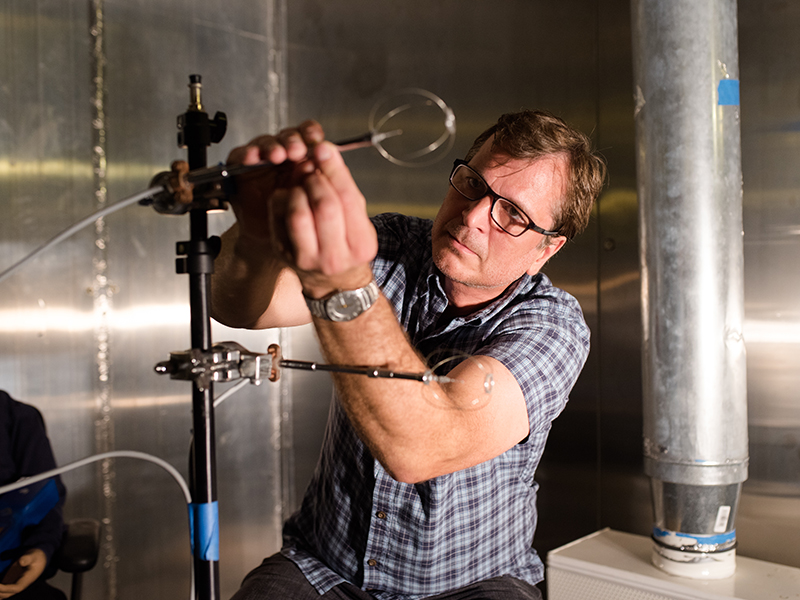
The Building Energy and Environments program at the University of Texas at Austin consists of a community of over 35 scholars (faculty, staff, post-docs and students) who investigate a wide range of issues related to building environments.
Why is the study of building energy and environments important?
- Residential and commercial buildings account for nearly 40% of total U.S. energy consumption.
- Worldwide building energy use accounts for 33% of global anthropogenic greenhouse gas emissions.
- On average, Americans spend over 21 hours per day inside of buildings; the most vulnerable (infants and elderly) spend even more time indoors.
- The exposure of Americans to toxic air pollutants is dominated by what we breathe indoors, and corresponding health risks dwarf other environmental issues.
- Indoor air pollution is responsible for 5,000 premature deaths every day in developing countries. Women and children are particularly affected.
- Studies have shown that improved indoor air quality can raise the test scores of school children.
- Reasonable changes in building design and operation to improve indoor environmental quality may have annual economic benefits (in terms of worker productivity) on the order of tens of billions of dollars in the U.S.
- If designed and operated properly, buildings can be shelters that substantially reduce population exposures to harmful outdoor air pollution.
The Building Energy and Environments program at the University of Texas at Austin consists of a community of over 35 scholars (faculty, staff, postdocs and students) who investigate a wide range of issues related to building environments. Program research focuses on:
- Energy flows and conservation methods
- Moisture transport, control and effects
- Microbial growth and fate
- Sources of VOCs, SVOCs, and particles
- Transport of indoor pollutants
- Homogeneous and heterogeneous reactions
- Physical removal of gases and particles on surfaces
- Human exposure to indoor pollutants
- Control of indoor pollutants

